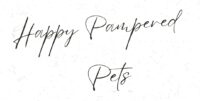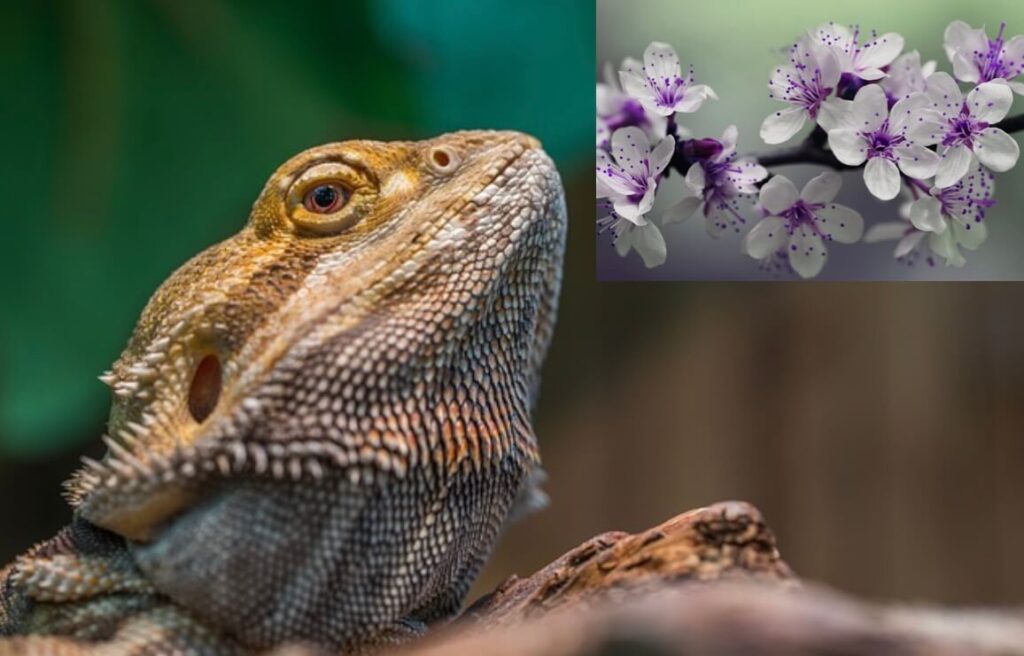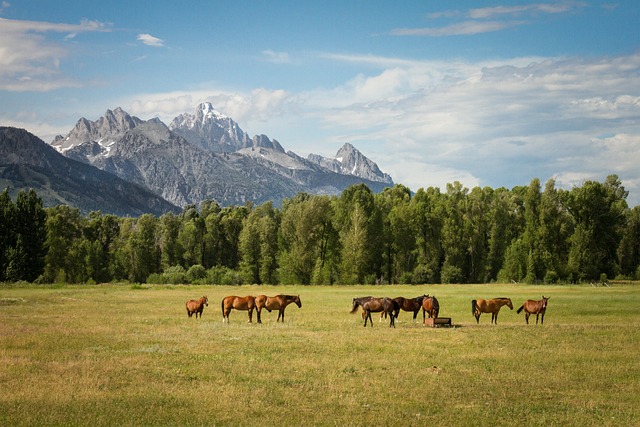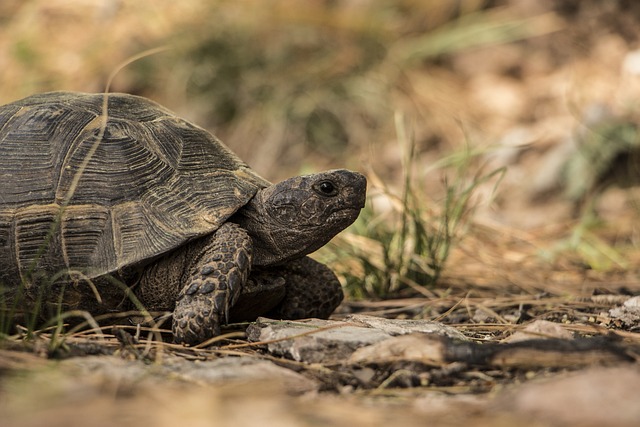If you’re wondering “What flowers can bearded dragons eat” the answer is: many! Bearded dragons can eat dandelions daily, as well as daisies, roses, and many other flowers sparingly.
In this article, we’ll explore the nutritional value of flowers for bearded dragons and how to feed them properly.
What flowers can bearded dragons eat?
Bearded dragons can eat many flowers, including:
- Dandelions (daily)
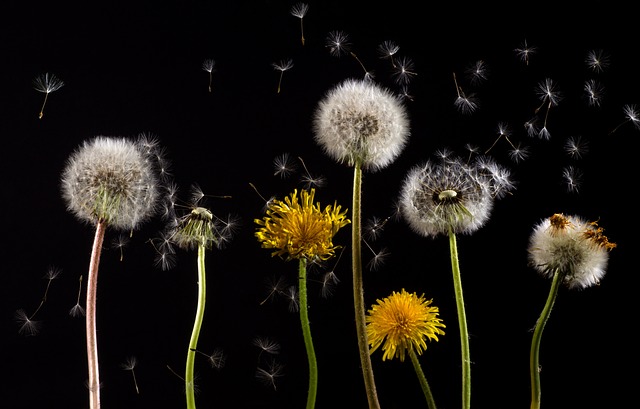
- Sunflowers
- Violets
- Dahlias
- Geraniums
- Hibiscus
- Lavender
- Roses

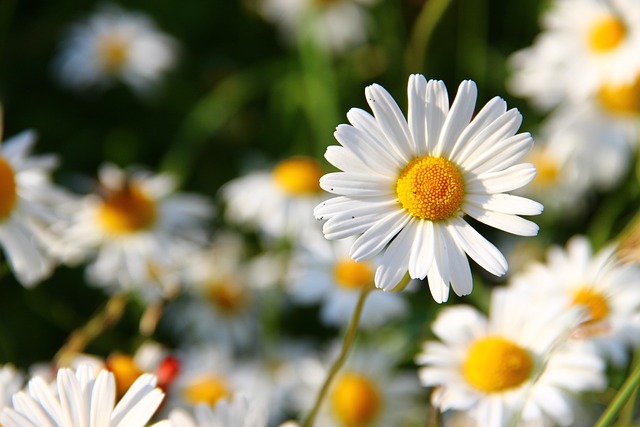
- Carnations
- Orchids
- Clover flowers
All of these flowers, except dandelions which can be fed daily, should be given to bearded dragons every few days at most. They should be kept on a diet of insects and other plant matter, because most flowers don’t provide great nutritional value to them. A list of recommended vegetables is provided down below.
What flowers should bearded dragons not have?
The below flowers may be toxic to your bearded dragon, especially if eaten in large quantities.
- Daffodils – may cause diarrhea and vomiting.
- Hollyhock
- Tulips – may irritate their digestive tracts
- Boxwood
- Sweet peas
- Morning glory
- Peonies
- Periwinkle
- Primrose
- Lilies
How to feed your bearded dragon flowers safely:
- Always wash your flowers thoroughly, to make sure they don’t have pesticides or chemicals on them. If they do, it’ll poison your beardie and likely cause a reaction.
- Cut the flowers up, removing any debris.
- Slowly give your bearded dragon a tiny amount of the flower, especially if it’s a new flower they haven’t eaten before.
- Observe them for any possible reaction.
- If they’re fine after 24 hours, you can safely add this flower to their weekly diet!
Frequently Asked Questions (FAQ):
Can bearded dragons eat calendula flowers?
Calendula flowers, or marigolds, should not be fed to your bearded dragons. These types of flowers will likely irritate your bearded dragon’s digestive system, and marigolds caught in the wild may contain harmful pesticides or parasites. It’s best to be safe and avoid feeding your bearded dragon calendula flowers.
Can bearded dragons eat hyacinth flowers?
No, bearded dragons can not and should not eat hyacinth flowers. They are toxic to them and will upset their sensitive digestive systems.
Can bearded dragons eat lilies?
No, bearded dragons can not eat lilies as they are considered very toxic for them.
Can bearded dragons eat dianthus flowers?
Dianthus flowers, otherwise known as carnations, can be eaten by bearded dragons. However, they provide very little nutritional value to them, so should be fed only occasionally to your beardie.
Can bearded dragons eat sunflower petals?
Yes! Bearded dragons can eat sunflower petals, as well as sunflower seeds. They are very nutritious for bearded dragons.
Can bearded dragons eat black eyed susans?
Yes, bearded dragons can eat black eyed susans, but only as a treat and only in moderation.
What plants can bearded dragons not eat?
Bearded dragons can not eat:
- Onions
- Leeks
- Chives
- Mushrooms
- Garlic
- Acidic fruit like oranges, lemons, kumquats
- Rhubarb (can be toxic to them)
- Avocados (surprisingly, these make them ill)
- Eggplant
- Insects caught in the wild (there may be pesticides covering them)
- Venomous insects
- Dairy of any kind
- Rice and grains of any kind
- Frogs or toads
- Ham or other processed meats
Can I put real plants in with my bearded dragon?
Yes, you can add real plants in with your bearded dragon. In fact, this will make their environment more dynamic and stimulating for them.
What bugs can bearded dragons not eat?
Bearded dragons can not eat any bug that is venomous or that glows (fireflies, lightning bugs, or worms that glow in the dark).
What fruit is toxic to bearded dragons?
High acid fruit like citrus should never be fed to your bearded dragons. This includes lemons, limes, oranges, grapefruits, and kumquats.
Can Beardies eat scrambled eggs?
Yes, beardies can safely eat scrambled eggs. Remember not to mix in any additional ingredients that they can’t eat, and not to feed them more than roughly half an egg at a time.
Foods bearded dragons can eat:
If you’re wondering what you should feed a bearded dragon, read our guidelines below. Bearded dragons are insectivores, which just means they thrive on insects as well as plant materials.
If you have a juvenile bearded dragon (between six and eighteen months old), give them about 80% vegetables and 20% live insects.
As your bearded dragon transitions into adulthood, give them the inverse, so 20% plant materials and 80% insects.
Getting your bearded dragon calcium:
Calcium is especially vital to a bearded dragon, especially a young one that is still growing. There are several ways to introduce more calcium into your beardie’s diet:
- Add in more high calcium vegetables like dandelions, bok choy, and collard greens.
- Dust calcium powder over their insects and vegetables to increase calcium levels.
- Make sure they’re getting their 12 hours of UVB exposure as they need this light to be able to properly absorb nutrients.
Vegetables to feed your bearded dragon:
- Peas
- Dandelion
- Green beans
- Cabbage
- Zucchini
- Pumpkin
- See our full list of vegetables to feed your bearded dragon
Note: Bearded dragons can also eat fruit in moderation. See here for a complete list of fruits bearded dragons can eat.
Insects to feed your bearded dragon:
- Crickets
- Kingworms
- Waxworms
- See our full guides to insects you can feed your bearded dragon and worms to feed your bearded dragon
Quick note: Live insects raised by you or bought from the pet store are best because they’re definitely pesticide free.
How often should you feed a bearded dragon?
During the first 3-6 months of your beardie’s life, try to feed them four to five times a day by giving them as many insects as they’d like in 10 minutes. They’re growing and need lots of protein during this stage.
Reduce the number of feedings to about two to three times a day when they’re growing into their juvenile years (between six and eighteen months).
As they become an adult, you can feed them once daily.
Recap: Flowers bearded dragons can eat
- Bearded dragons can eat many flowers including dandelions, daisies, roses, geraniums, and violets.
- It’s best to avoid feeding them flowers like daffodils, boxwood, tulips, and hollyhock.
- Always wash your flowers and introduce new flowers slowly to their diet, to see if they have any sort of reaction.
For our full list of food to feed a bearded dragon, see our guide here.
Related articles:
